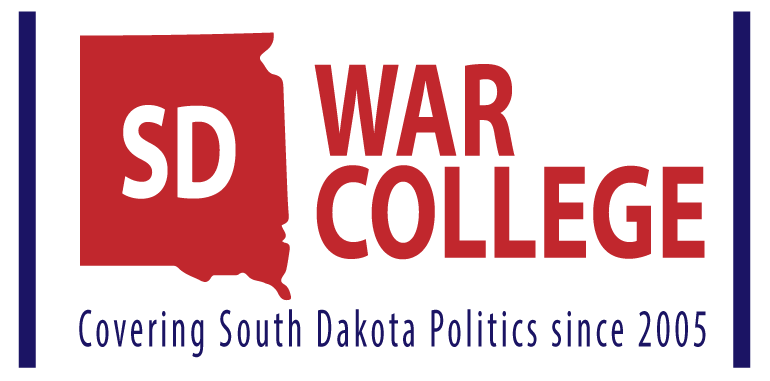I’m sure this is going to be dissected over the coming weeks, but here’s the primary issues that the litigants have against Initiated Measure 22, according to South Dakota State Law, the State Constitution, and the United States Constitution.
And as you read the problems with Initiated Measure 22, the case they lay out is stronger than you might have thought previous to it being brought. Here’s the highlights as taken directly from the lawsuit:
Count One- The Ethics Commission violates Article 2 and Article 4, Section 8 of the state constitutionn.
Section 32 of IM22 creates an independent Ethics Commission that is not part of the legislative, executive, or judicial branches of government nor is it allocated to, responsible to, attached to, or overseen by any existing department, agency, or constitutional officer of the State of South Dakota.
Count Two-The Ethics Commission violates the Governor’s executive appointment authority and the separation of powers.
Under Article 4, Section I of the South Dakota Constitution, the Governor is vested with the executive power of the State. Section 24 of IM22 violates the doctrine of separation of powers, which provides that each department of state government should act independently of the others. Section 24 violates this doctrine because the Governor’s executive authority to make appointments to the Ethics Commission is limited and in effect negated.
Count Three–IM 22 unconstitutionally delegates legislative authority to the Ethics Commission.
The power given to the Ethics Commission in Section 40 of IM22 to “replace or modify” 21 sections of the law constitutes an unlawful delegation of legislative power in violation of Article 3, Section 1 of the South Dakota Constitution.
Count Four-the Ethics Commission cannot lawfully qualify candidates
Section 40(9) of IM22 gives the Ethics Commission the broad power to adopt rules under SDCL Ch. 1-26 to regulate the qualification and certification of candidates. By giving the Ethics Commission the power to regulate the qualification of candidates for the Legislature and the offices of governor and lieutenant governor, Section 40(9) usurps the constitutional authority of the legislative and executive branches under Article 3, Section 9 and Article 4, Section 2 of the South Dakota Constitution, and thereby violates Article 2 of the Constitution.
Count Five-IM22 unconstitutionally appropriates from the general fund
The annual appropriation made by Section 68 was not made by a two-thirds vote of the members of each house of the Legislature, and is therefore unconstitutional.
Count Six-Section 31 impairs existing contracts
Under Section 31, Curd, Peters, and Soholt must give up either their employment or their elected office to comply with IM22, which substantially impairs their existing contractual relationships. The requirement that citizen legislators or their family members not accept compensation from their primary employer if the employer happens to employ a lobbyist is not reasonably related to the purpose of IM22 of preventing corruption. IM22 therefore violates the Contracts Clause to the United States Constitution (Article 1, Section 10) and the South Dakota Constitution (Article 6, Section 12).
Count Seven-Section 31 violates the right to free speech
Under Section 31, a lobbyist or employer who hires a lobbyist is limited to contributing $100 to many elected officials running for office, while anyone else is subject to much higher limits. Section 31 thereby restricts and reduces political speech protected by the First Amendment to the United States Constitution and Article 6, Section 5 of the South Dakota Constitution.
Count Eight-the Democracy Credit Program violates equal protection and rights protected by the First Amendment to the United States Constitution and Article 6, Sections 4 and 5 of the South Dakota Constitution.
IM22 does not appropriate enough money for every registered voter to be able to use $100 in democracy credits. In addition, the cap on the democracy credit fund allows only a small percentage of currently registered voters to obtain the face value of their democracy credits. (Editor’s note – I’ve suspected there would be a problem with this all along!)
Count Nine–the disclosure requirements for independent expenditures violate the right to free speech
Based on the many and short deadlines for disclosure, the information that must be disclosed, and the low disclosure threshold, the disclosure requirements in IM22 are unduly burdensome and thereby violate the right to free speech protected by the United States and South Dakota Constitution because they will burden, chill, and reduce individuals’ and organizations’ ability to engage in political speech and activity and do not have a relevant correlation or substantial relation to a sufficiently important governmental interest
Count Ten-single subject rule
Article 3, Section 21 of the South Dakota Constitution prohibits laws from embracing more than one subject. IM22 is unconstitutional because it addresses multiple distinct subjects including campaign contribution limits, lobbying restrictions, the democracy credit program, and the establishment of an independent ethics commission.
The lawsuit also asks for declaratory and injunctive relief.



